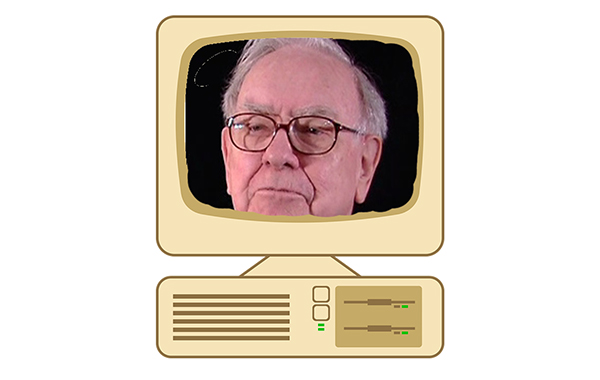Insurance Technology Diary
Episode 41: Chow down at the Prudence Buffet
Guillaume Bonnissent’s Insurance Technology Diary

I expect our world of insurance to be a little bit less colourful soon, since two of its most outspoken leaders have elected to retire. Evan Greenberg – whose latest polemic revolves around insurers that back litigation finance – is to step down. But an even greater departure from vocal service is the retirement of Warren Buffett. He was already looking old when I began as an underwriter decades ago – but never behaved old. All the market veterans hung on his every utterance about insurance.
Together their departures will mark the commencement of a different kind of market softening. A softening of rhetoric.
Warren Buffett’s wise words will be particularly missed. Greg Abel, his old ally and the new chief of the Berkshire Hathaway empire, and Buffett’s hugely respected insurance supremo, Ajit Jain, will no doubt keep the flame alight. But with Buffett stepping back and his old sidekick Charlie Munger no longer with us, I wonder how the tone might change.
The Buffett-Able-Jain trio’s thoughts on insurance – so often presented as Buffett’s exclusively – were recently relayed in a note from ABN AMRO equities analyst Cor Kluis. He wrote that the triumvirate “believe it is better to invest $ 100bn in P&C insurance than in AI,” because the return on capital invested in P&C is “good and known, and that of AI unknown.”
Fair point. It’s classic Buffett. Remember how he “missed” the tech-stock boom during the dot-com bubble almost exactly 25 years ago… then missed its bursting?
Something else Kluis attributes to Buffett, Jain, and Abel tells us a bit more about AI for insurance. He reports (paraphrasing) that they argue: “AI is a game changer for the insurance industry in assessing risk, pricing risk, and executing business,” but that these individual giants of insurance wisdom have adopted “a wait and see approach with AI in insurance before actively applying it.”
To be fair, they’re already using AI to address specific problems. For example, GEICO’s initiatives include the use of computer vision and machine learning algorithms to streamline claims processes, and deep learning algorithms to detect claims patterns and anomalies, including exposure of fraud.
In days past, most insurance company leaders were completely disconnected from their IT leaders’ deployment of types of AI. That changed when the huge publicity prompted by ChatGPT made everyone except Buffett & Co. suddenly believe that generative AI would be the saviour of whatever they think needs rescuing, business-wise. As I have said here many times before, it won’t.
Still, it’s the current driver of insurance-market technology “sentiment.” This is according to the ever-insightful Andrew Johnson of Gallaghers, whose quarterly Global InsurTech Report is required reading for anyone with any interest in technology for the insurance sector (alongside Insurance Technology Diary, of course).
The Q1, 25 edition of GITR provides a 10-year overview of insurTech funding, and maps the evolution of the phenomenon in five two-year, headline areas:
- Predominant form of Capital
- Theme
- Target of Innovation
- Stance of Incumbent Players, and
- Market Sentiment.
The resulting table of astute observations is fascinating. I will reiterate here only column five, 2024-5. Respectively, they are
- Sensible Raises
- Profitability and Underwriting Results
- Mutual Sustainability
- Alignment with Core Goals, and
- (here’s where it goes a bit wonky) Artificial Intelligence.
In the previous, 2022-23 column, that last headline was “Profitability,” which in my mind should have endured.
Andrew’s interpretation of recent activity in the insurTech sector can be summarised as a return to focus on what matters, and to what makes insurance valuable. That, of course, is the results, not the technology. People forgot that with Blockchain (the “Market Sentiment” headline for 2015-16). They forgot that the tech must be embraced to improve results by lowering expense ratios or improving underwriting returns. They began to jump at tech for tech’s sake.
But any investment in technology for insurance must be made either to address a pain point or to implement a clearly targeted process improvement, as Buffett & Co. did (by proxy) at GEICO. With the current insurTech fondness for AI, we must keep in mind always that it is only a means to an end. That end should be the same as it should have been last year, in 2001 when the tech bubble burst, and ever before: to increase the bottom line.
As we withdraw from our annual correspondence of wisdom from the Sage of Omaha, we should remember his cautious approach to the unproven. Our insurance system is working fairly well. We don’t need a magic technological fixer.
We do need to change the Market Sentiment headline. How about: “Prudent, Targeted Use of AI to Fix Problems”?
